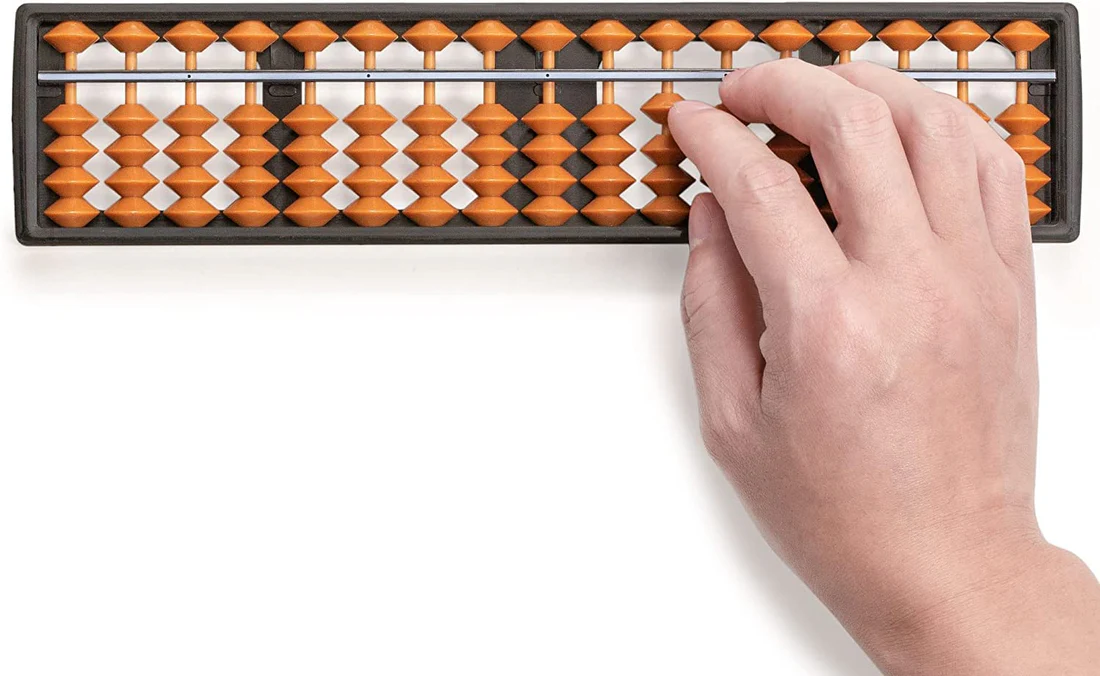The soroban is a traditional Japanese abacus used for arithmetic calculations. It is an ancient calculating tool that has played a significant role in Japan’s mathematical education and practice. The term “soroban” is derived from the Japanese words “soro” (which means to count) and “ban” (which refers to a board or surface).
Historical Background
The origin of the soroban can be traced back to the Chinese abacus, known as the “suanpan,” which was introduced to Japan during the Tang Dynasty (618–907 AD). The suanpan featured a different configuration compared to the modern soroban, with two beads on each rod in the upper section and five beads on each rod in the lower section. Over time, the Japanese adapted and simplified this design to create the soroban, which gradually became an integral part of Japanese culture.
Design and Structure
The traditional soroban consists of a rectangular wooden frame divided into columns or rods, each of which represents a place value, such as units, tens, hundreds, and so on. The frame is typically made of wood, though modern versions can be crafted from plastic or other materials. Each rod of the soroban has a series of beads strung on it, separated into two distinct sections by a horizontal bar.
- Beads Configuration: On each rod, there are five beads – one bead in the upper section and four beads in the lower section. The upper bead represents a value of five, while each bead in the lower section represents a value of one. The beads are moved up or down to perform arithmetic operations.
- Functionality: The upper bead is positioned above the bar, and the lower beads are positioned below it. When the bead is moved toward the bar, it signifies a value addition, while moving it away from the bar signifies a value subtraction. This positioning and movement allow the user to perform calculations by manipulating the beads in different configurations.
Usage and Applications
The soroban is used for various arithmetic calculations, including addition, subtraction, multiplication, and division. It is also employed for more advanced mathematical functions such as square roots and cube roots, depending on the complexity of the problem. The soroban is a versatile tool that not only helps in performing calculations quickly but also enhances mental arithmetic skills.
- Education: In Japan, the soroban is widely used as an educational tool. Students learn to use the soroban from a young age, and it is often part of the curriculum in primary and secondary schools. The practice of using the soroban helps students develop a strong foundation in arithmetic and mental calculation.
- Competitions: There are various soroban competitions held in Japan and other countries where participants demonstrate their speed and accuracy in performing calculations using the abacus. These competitions often feature different levels of difficulty and are attended by enthusiasts and students alike.
- Modern Usage: Although digital calculators and computers have largely replaced the soroban for everyday calculations, it is still respected and used by many for its educational benefits and traditional value. The soroban continues to be a symbol of Japan’s mathematical heritage.
Advantages of Using the Soroban
- Enhanced Mental Arithmetic Skills: Regular use of the soroban helps users develop strong mental arithmetic skills. By practicing calculations on the soroban, individuals enhance their ability to perform arithmetic operations mentally, which can be advantageous in various mathematical tasks.
- Improved Concentration and Focus: Using the soroban requires a high level of concentration and focus. This cognitive engagement helps improve overall concentration skills, which can be beneficial in academic and professional settings.
- Visual and Tactile Learning: The physical manipulation of beads on the soroban provides a visual and tactile learning experience. This hands-on approach helps learners understand mathematical concepts more effectively than abstract representations alone.
- Historical and Cultural Significance: The soroban represents a rich cultural and historical tradition. Its continued use and study preserve an important aspect of Japanese heritage and offer insights into historical mathematical practices.
Conclusion
The soroban remains a fascinating and valuable tool in both historical and educational contexts. Its unique design, coupled with its ability to enhance mental arithmetic skills and improve concentration, makes it a cherished part of Japan’s mathematical tradition. While modern technology has transformed the landscape of arithmetic calculations, the soroban continues to be a symbol of Japan’s rich cultural heritage and a testament to the enduring legacy of traditional mathematical tools.
